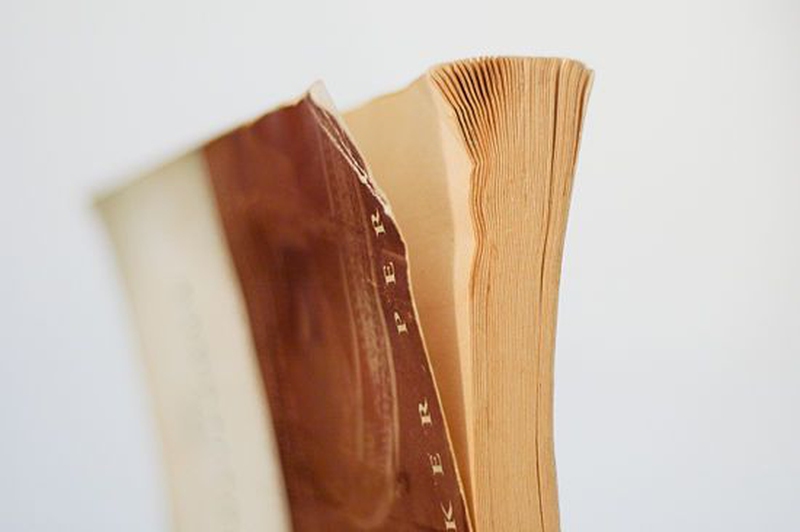Whether you are a casual bibliophile or a serious collector, your books likely mean a lot to you. If you do not feel confident handling your prized books in the following methods, please find a local conservator who can professionally clean your collection, or rebind them if all else fails.
Remember, mold and mildew can be harmful to you as well as to your treasured library! Please exercise caution, and wear a mask over your nose and mouth to reduce the impact on your health.

Part 1
If you can perceive growth on your book's cover, you may use a fine brush or very soft cloth to gently brush away the mildew. Alternatively, a HEPA filter vacuum hose attachment with a thin cloth or dryer sheet over the nozzle can be an effective resource to remove mold growth from the book cover.
For a paperback book you can use a soft cloth lightly dampened with denatured alcohol to kill the mildew. Use light, gentle strokes as not to damage the paper/glossy cover, and make sure that you dab away the excess liquid and dry the book thoroughly but gently.
For a cloth, leather, or other hardback types of binding, you can spot-clean with denatured alcohol, but make sure to test an out-of-the-way corner to check for color change or deterioration.
Slide a sheet of waxed paper underneath the moldy page to protect the page behind it. As in the step above, use a soft brush to carefully remove any obvious mold or mildew. Dampen a soft cloth with hydrogen peroxide or denatured alcohol and carefully treat
Do not attempt to brush or wipe mold off of your damp books, as it will likely smear and stain the surface, as well as grinding it further into your book. You MUST dry your book and then treat the mold problem afterwards.
If you are not able to work on drying and cleaning a damp book immediately, place it in a plastic zip-top bag and pop it in the freezer. Let it thaw once you are ready to try the following methods of drying your book:
Place absorbent sheets (paper towels, rags, etc) between each page of the book and wrap the book in a towel. Set a heavy weight on top to squeeze out the moisture. You will need to replace the absorbent materials frequently. Repeat until the book is damp, not sopping.
Air circulation is very helpful in drying your book. You can use fans or hair dryers to speed the drying process, but air directed at the books for an extended amount of time can cause warping of the cover, boards, and pages.
If your weather is cooperative, place the books into the sunlight, as exposure to the sun’s UV rays can help to kill mold spores. Remember; however, that light can cause damage and bleaching, so bring in your books after an hour in the sun.
You can dry a damp book completely by sprinkling cornstarch between the pages and letting it sit in a plastic bag or box for a couple of hours. The cornstarch will absorb the excess moisture. When you remove the book, use a soft brush to clean up the cornstarch and repeat as needed.
If your book is mold and mildew free but still has a smell to it, you can sprinkle baking soda in a sealed container or bag and place the book inside for a couple of hours. The baking soda is quite effective at absorbing the scent. Activated charcoal can be substituted in this step. Again, repeat as necessary.

View All Comments /Add Comment